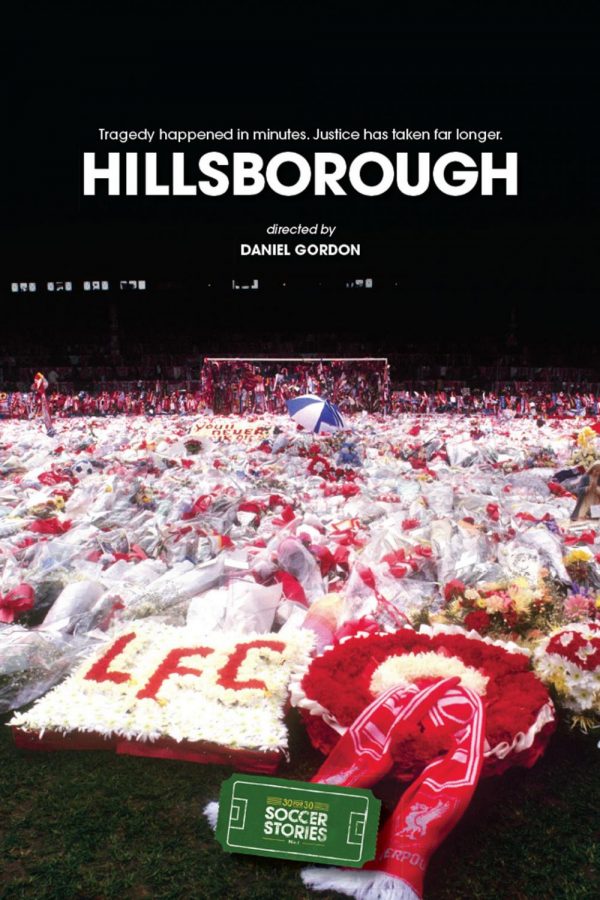Hillsborough 30 for 30: A Tragic Account of a Preventable Accident
“Hillsborough” is one of many when it comes to movies in the ongoing ESPN 30 for 30 series and even the Soccer Stories subcategory it is placed in, but this documentary hits harder than almost every other one on the list. Rather than documenting an obscure team’s rise to fame or quirky anecdote almost lost forever in sports history, the story of the Hillsborough Disaster will never be forgotten, thanks in part to this production.
The Hillsborough Disaster took place on April 15th, 1989 at the English FA Cup Semifinal match where Liverpool FC was penned to face off against Nottingham Forest FC. The disaster took its name from the stadium where the match was held; Hillsborough was the home ground to the club Sheffield Wednesday in Sheffield, England. It started as Liverpool fans flooded in from the gates and concourse in high spirits to see their favorite club play for a spot in the FA Cup Final, but those in the front towards the pitch had to withstand more force than one ever should at a football match, resulting in the death of 96 people from the overcrowding, and the match was stopped only six minutes after kick-off.
You can find this story quite easily on the internet, but the ESPN documentary dives deeper than anything I had heard about the event before—about unlucky police staff switches, wrongful accusations, and closure for those who were indirectly affected not being served until decades later.
It starts with the FA Cup Semifinal match, but not the one in 1989. Eight years prior, a previous semifinal match had been held at Hillsborough between Tottenham Hotspur FC and the Wolverhampton Wanderers. Even then, Hillsborough wasn’t capable of handling such a gargantuan affair as fans were crushed up against the fences, but they were able to spill out onto the side of the field after a gate was opened. Some officers said deaths could’ve resulted, but this statement was refuted by higher-ups.
One of the best tangents included in the story, though seemingly insignificant, is about a hazing incident by two officers “mugging” a newly-hired officer outside of Sheffield. After the officer that was the victim of the offense complained, the two hazers were demoted, and police chief Brian Mole was transferred to Barnsley. Mole was very experienced in handling football events and was making plans for the upcoming fixture between Liverpool and Nottingham Forest. With him gone, inexperienced David Duckenfield became police chief and was tasked with handling the game. It was clear early on that Duckenfield wasn’t fit for the job when he referred to Nottingham Forest as “Nottinghamshire.”
When game day came around, the number of fans showing up was actually quite sparse until 20 minutes before; at this time, the Liverpool fans began showing up in exponentially growing numbers. Eventually, tragedy struck and though not all 96 died right away—some passed away later due to complications—many had been killed in that short period of time while Duckenfield watched on from the control room, doing nothing to alleviate the situation. Bodies were taken to a gym across the street from the stadium and later were tested at the order of coroner Stefan Popper for blood-alcohol levels, even children. Unbeknownst at the time, those higher in the ranks in the police force tried to conserve their image by painting the Liverpool fans as a bunch of drunken hooligans. This became the overall consensus as news outlets distributed this story.
Although the police’s cover-up of its irresponsibility was effective for many years, it was exposed not long ago that the accounts of the officers had been edited without their knowledge by their superiors. Along with these documents being leaked, many people interviewed whose loved ones had been injured or died at the incident had been protesting for years for justice or closure at the least. The Hillsborough Independent Panel was founded by the British government in 2009, and it came to the conclusion in 2012 that the Liverpool fans were not at fault for the Hillsborough Disaster and that the police did not have sufficient control over the situation, granting closure to those who needed it.
This emotional story, although very sad for its majority, has a few bright spots, including the conclusion clearing the fans of fault. I would recommend this documentary for anyone passionate about sports, and I think its something everyone needs to see.

Eli Romijn is a junior at FHC, entering his first year as a sports reporter. He is a hard-working student who has a love for athletics, and he plays tennis...

























































































